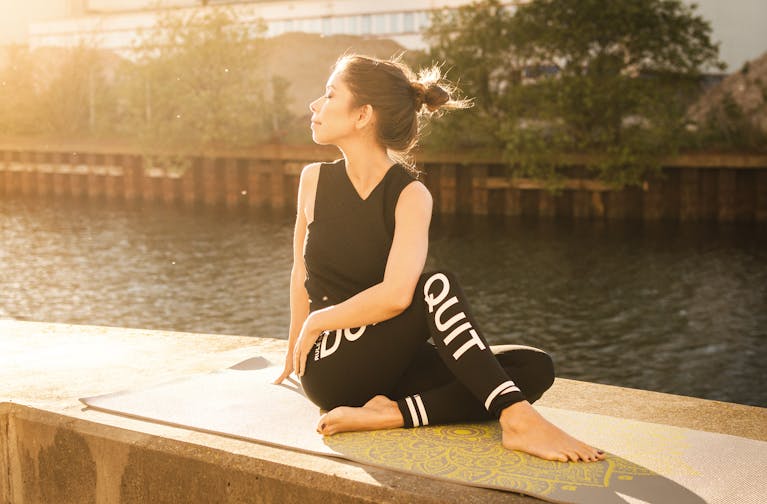The Mindfulness Shift: How Slowing Down Can Help You Feel Better, Think Clearer, and Stress Less

You don’t have to move to a mountaintop or meditate for hours a day to practice mindfulness.
Mindfulness isn’t about perfection or “achieving peace.” It’s about being here—fully present in your body and mind—even for just a few moments at a time. And in a world that constantly pulls our attention in a hundred directions, that’s no small thing.
The truth is, mindfulness isn’t a trend. It’s a practical, science-supported lifestyle habit that can change how you respond to stress, how you connect with others, and even how you treat yourself.
In this guide, we’ll break down what mindfulness really is, what the research says, and simple ways to bring more of it into your everyday life—without needing to overhaul your routine.
What Is Mindfulness, Really?
At its core, mindfulness means paying attention—on purpose, in the present moment, without judgment.
It’s noticing the sensation of your breath without trying to change it. It’s hearing your thoughts without reacting to them. It’s tasting your food without multitasking. It’s being in the now, not lost in the past or future.
That doesn’t mean tuning out the world or pretending life is perfect. It means becoming aware of your experience—so you can respond, rather than react.
Why Mindfulness Matters
Here’s what happens when we live on autopilot: We rush, we overthink, we react impulsively, and we miss what’s happening right in front of us. Mindfulness interrupts that loop.
Practicing mindfulness has been linked to benefits in nearly every area of health:
Mental & Emotional Benefits
- Reduced anxiety and depression symptoms
- Improved emotional regulation
- Increased resilience and self-compassion
- Greater focus and mental clarity
Physical Health Benefits
- Lower blood pressure
- Improved sleep quality
- Reduced levels of cortisol (your stress hormone)
- Enhanced immune function
Relationship Benefits
- Better communication
- More patience and empathy
- Less reactivity in conflict
And it’s not just theory—there are decades of research backing this. Mindfulness-based programs have been shown to reduce stress in medical patients, improve focus in students, and even improve job satisfaction in professionals.
What Mindfulness Is Not
Before we dive into how to start, let’s clear up a few myths:
- It’s not about clearing your mind. Your mind will wander—that’s normal. The point is to notice it and gently return to the present.
- It’s not just meditation. Mindfulness can happen during everyday activities—walking, eating, brushing your teeth, or even doing dishes.
- It’s not about becoming emotionless. It’s about creating space between stimulus and response, so you’re not at the mercy of every thought or feeling.
In other words, mindfulness helps you become more aware—not more perfect.
5 Ways Mindfulness Can Change Your Day (Backed by Research)
1. It Helps You Respond Instead of React
When something stressful happens, mindfulness helps you pause, notice what you’re feeling, and choose how to respond. That’s huge for stress management, conflict resolution, and emotional resilience.
Study spotlight: Research from Harvard found that mindfulness training led to a significant reduction in emotional reactivity and improved attention control.
2. It Improves Focus and Productivity
You know that distracted, foggy feeling where your to-do list just grows longer? Mindfulness strengthens your brain’s ability to stay focused on a task and ignore distractions.
Study spotlight: A University of Washington study showed that mindfulness training improved productivity and decreased multitasking errors among office workers.
3. It Supports Better Sleep
Mindfulness helps calm your nervous system and reduce racing thoughts, making it easier to fall asleep and stay asleep.
Study spotlight: A randomized trial in JAMA Internal Medicine found that adults who practiced mindfulness had less insomnia and fatigue compared to a sleep-education group.
4. It Strengthens Your Mind-Body Connection
When you’re more present, you notice hunger cues, tension in your body, emotional triggers, and energy levels—allowing you to make healthier decisions with less internal conflict.
Study spotlight: Mindfulness-based interventions have been shown to reduce emotional eating and support long-term habit change.
5. It Builds Emotional Awareness and Self-Compassion
Rather than judging yourself for feeling stressed or anxious, mindfulness teaches you to acknowledge what’s real and treat yourself with patience instead of pressure.
Study spotlight: Studies have found that regular mindfulness practice increases levels of self-compassion, which is strongly tied to mental health and motivation.
7 Ways to Practice Mindfulness in Everyday Life
You don’t need a meditation cushion or an hour of free time. Mindfulness can fit into your day in simple, accessible ways.
1. Start Your Morning Without Your Phone
Take five quiet minutes after waking to stretch, breathe, and check in with your body before reaching for screens.
2. Take One Mindful Breath
Pause in the middle of your day. Inhale slowly through your nose, exhale fully through your mouth, and pay attention to the sensation of your breath. Just one mindful breath can interrupt stress spirals.
3. Do a Body Scan
Before bed or during a break, take one minute to scan your body from head to toe. Notice tension, discomfort, or sensations without trying to fix anything.
4. Eat Without Distractions
Try eating one meal a day without TV, phone, or multitasking. Chew slowly. Notice the flavors, texture, and how full you feel. This supports digestion, satisfaction, and mindful eating habits.
5. Walk Without Earbuds
Take a 10-minute walk without music or podcasts. Just notice your steps, your breath, the sounds around you, and how your body feels.
6. Use Anchors
Pick a daily task—like brushing your teeth or making coffee—as a mindfulness anchor. Each time you do it, use it as a moment to be present.
7. Name What You’re Feeling
When a big emotion hits, pause and name it out loud: “This is stress.” “This is uncertainty.” “This is anger.” Naming it creates space between the feeling and your reaction.
How to Start a Simple Mindfulness Practice (That You’ll Actually Stick With)
If you’re curious about building a short daily practice, try this:
The 5-Minute Mindfulness Routine
- Find a quiet place. Sit comfortably with your feet on the floor or cross-legged on a cushion.
- Set a timer for 5 minutes.
- Close your eyes (or soften your gaze).
- Focus on your breath. Inhale slowly. Exhale fully. Feel the rise and fall in your body.
- Notice when your mind wanders—and gently bring it back to the breath.
- End with a check-in. How do you feel now compared to five minutes ago?
Try this once a day for a week. No expectations. No goals. Just time to be present. Over time, you can increase the length or explore guided practices.
Mindfulness Is a Practice, Not a Perfect
You won’t always feel calm. You won’t always get it “right.” That’s okay.
Mindfulness isn’t about escaping real life. It’s about engaging with it more fully—moment by moment, breath by breath. When you slow down, pay attention, and create space between reaction and response, your world starts to feel different: more grounded, more intentional, and more yours.
So whether you meditate, walk, breathe, journal, or just pause for a minute at your kitchen counter, you’re practicing something powerful. You’re coming home to your life—and to yourself.






